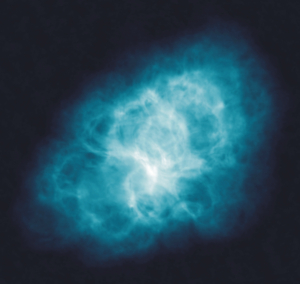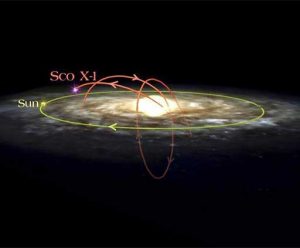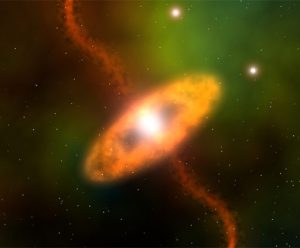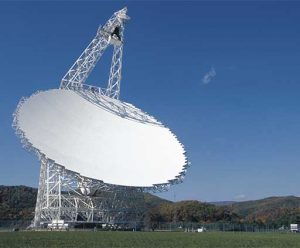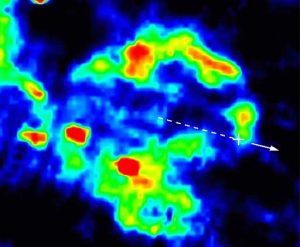In a major breakthrough for understanding what one of them calls ‘the most exotic environment in the Universe,’ a team of astronomers has discovered that powerful radio bursts in pulsars are generated by structures as small as a beach ball.
Astronomers Trace Microquasar’s Path Back in Time
Astronomers have traced the orbit through our Milky Way Galaxy of a voracious neutron star and a companion star it is cannibalizing, and conclude that the pair joined more than 30 million years ago and probably were catapulted out of a cluster of stars far from the Galaxy’s center.
Young Star Probably Ejected From Triple System
Astronomers analyzing nearly 20 years of data from the National Science Foundation’s Very Large Array radio telescope have discovered that a small star in a multiple-star system in the constellation Taurus probably has been ejected from the system after a close encounter with one of the system’s more-massive components, presumed to be a compact double star. This is the first time any such event has been observed.
Aging Star is a Giant Water Fountain
Astronomers using the National Science Foundation’s Very Long Baseline Array (VLBA) radio telescope have found that an aging star is spewing narrow, rotating streams of water molecules into space, like a jerking garden hose that has escaped its owner’s grasp.
Youngest Radio Pulsar Revealed with Green Bank Telescope
Astronomers using the National Science Foundation’s newly commissioned Green Bank Telescope have detected remarkably faint radio signals from an 820 year-old pulsar, making it the youngest radio-emitting pulsar known.
Age Discrepancy Throws Pulsar Theories into Turmoil
Astronomers using the National Science Foundation’s Very Large Array radio telescope have found a pulsar — a spinning, superdense neutron star — that apparently is considerably younger than previously thought.






